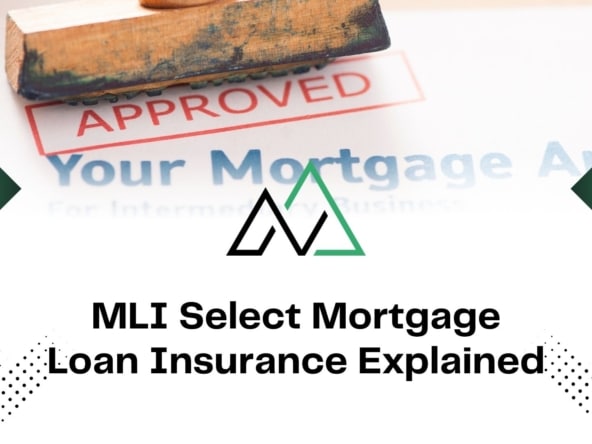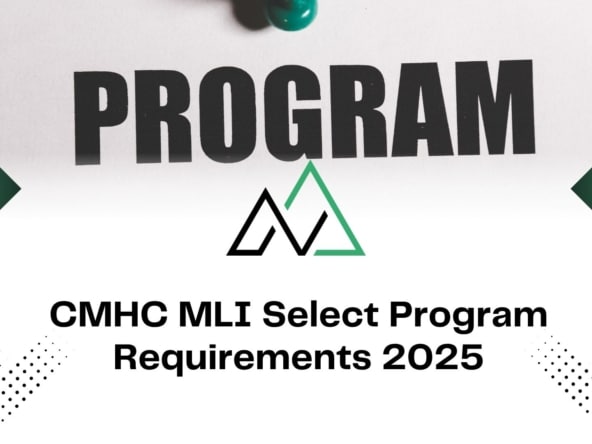Private mortgage insurance (PMI) can be a big financial weight for homeowners with smaller down payments. Knowing how to drop PMI can save you a lot of money each month. When you buy a home with less than 20% down, lenders often ask for PMI to protect their investment.
Getting rid of PMI is not just a dream; it’s something many homeowners can make happen. It takes careful planning, knowing your loan terms, and watching your home’s value grow. You can remove PMI in a few ways, like automatic termination, asking for it to be canceled, or when your home’s value goes up.
This detailed guide will show you the key steps to get rid of PMI. It will help you save money and gain more financial freedom.
Key Takeaways
- PMI is needed for down payments under 20%
- Automatic PMI cancellation happens at 78% loan balance
- Homeowners can ask to remove PMI at 80% loan balance
- Removing PMI can save up to $200 monthly
- Home value increase can help get rid of PMI quicker
Understanding Private Mortgage Insurance (PMI)
Private mortgage insurance is a key protection for lenders when buyers put down less than 20%. It lets buyers get loans with smaller down payments. This insurance helps lenders feel safer about lending money.
Buyers need PMI if they don’t put down 20%. Knowing about PMI helps buyers make smart money choices.
What Exactly is PMI and Why Do You Need It
PMI is a safety net for lenders. It helps them if a borrower can’t pay back the loan. With less than 20% down, lenders take on more risk. PMI covers this risk.
- Enables home purchases with lower down payments
- Protects lenders from possible defaults
- Typically needed for certain loan types
How PMI Affects Your Monthly Payments
PMI adds to your monthly mortgage costs. The cost is between 0.5% to 1% of the loan amount each year. This cost is added to your monthly payments.
| Loan Amount | Annual PMI Cost | Monthly PMI Premium |
|---|---|---|
| $250,000 | $1,250 – $2,500 | $104 – $208 |
| $350,000 | $1,750 – $3,500 | $146 – $292 |
Types of Mortgage Insurance Available
There are different PMI options for various financial needs. Buyers can pick the best PMI for their situation.
- Borrower-Paid Mortgage Insurance (BPMI): Most common, with monthly payments
- Single-Premium Mortgage Insurance (SPMI): Paid once at closing
- Lender-Paid Mortgage Insurance (LPMI): Added to the loan’s interest rate
- Split-Premium Mortgage Insurance: A mix of upfront and monthly payments
Choosing the right PMI depends on your financial situation and goals. It also depends on what your lender offers.
The Real Cost of Private Mortgage Insurance
Private Mortgage Insurance (PMI) is a big expense for homeowners with small down payments. Lenders ask for PMI when the down payment is under 20% of the home’s price. This adds a monthly cost that can grow fast.
The PMI cost changes based on several things. Usually, homeowners pay between 0.5% and 2.25% of their mortgage loan each year. For a $250,000 home, this means an extra $100-$470 each month. This can make it hard to lower your mortgage payments.
| Loan Amount | Annual PMI Cost | Monthly PMI Impact |
|---|---|---|
| $200,000 | $1,000 – $4,500 | $83 – $375 |
| $250,000 | $1,250 – $5,625 | $104 – $469 |
| $300,000 | $1,500 – $6,750 | $125 – $563 |
It’s important to know how PMI affects your finances if you want to cut down on mortgage costs. Here are some key points about PMI costs:
- PMI is needed for loans with more than 80% of the home’s value
- PMI stops automatically when the loan balance is 78% of the home’s original price
- Homeowners can ask to stop PMI when the loan balance is 80% of the home’s original price
Planning carefully can help you reduce or get rid of PMI. This can lower your mortgage payments and save you thousands of dollars over time.
How to Get Rid of PMI: Essential Methods
Learning how to remove PMI can save you a lot on your mortgage payments. Private mortgage insurance (PMI) doesn’t have to be a long-term cost. There are several ways to cancel mortgage insurance and lower your housing costs.
Knowing the best ways to get rid of PMI can help you manage your mortgage costs. Lenders have rules for removing PMI, giving you chances to cut down on extra expenses.
Automatic PMI Termination at 78% LTV
By law, PMI must be canceled when your mortgage balance is 78% of the home’s original price. This happens automatically, without you needing to do anything. It’s a safety net for borrowers.
- Automatic termination happens at 78% loan-to-value (LTV) ratio
- No additional steps needed from the homeowner
- Applies to conventional loans with private mortgage insurance
Requesting Early Cancellation at 80% LTV
You can ask to cancel PMI before hitting the 78% mark. When your loan balance is 80% of the home’s original value, reach out to your lender to start the process.
- Contact your mortgage servicer
- Provide proof of current home value
- Ensure no late payments in the past 12 months
Making Additional Principal Payments
One way to remove PMI is by paying down your mortgage faster. Making extra payments can get you to the 80% LTV threshold quicker. This can save you a lot on mortgage insurance costs.
An extra $200 monthly payment on a $300,000 mortgage could help you eliminate PMI earlier and save significant money over time.
To cancel mortgage insurance, you need a plan and to know what your lender requires. Each method has its own benefits. This lets homeowners pick the best option for their financial situation.
Understanding Loan-to-Value Ratio and PMI Removal
The loan-to-value ratio is key in figuring out when you can drop private mortgage insurance (PMI). It shows how much you owe on your mortgage compared to your home’s value. Knowing your LTV helps you plan when to remove PMI.
To find your LTV, just divide your mortgage balance by your home’s value. For instance, if you owe $180,000 on a $200,000 home, your LTV is 90%.
- Ideal LTV for PMI removal: 80% or less
- Automatic PMI cancellation occurs at 78% LTV
- Lenders typically require a 20% down payment to avoid PMI initially
To lower your LTV, you can make extra payments or wait for your home to appreciate. Some lenders let you cancel PMI early if you hit 80% LTV. This can save you a lot of money each year.
Remember, keeping your mortgage payments up to date and having the right paperwork is important for PMI removal. Watching your LTV helps you manage your mortgage costs better.
Home Value Appreciation and PMI Cancellation
Homeowners can get rid of private mortgage insurance (PMI) by using smart strategies. They can do this by understanding how home value changes work. This includes how market appreciation and home improvements can help remove PMI faster.
Home value can go up in two main ways: through market appreciation and home improvements. These actions can boost your home equity. This makes it easier to cancel PMI sooner.
Market Value Changes Impact
Real estate markets are always changing. This gives homeowners a chance to see their home value go up. The National Association of Realtors said home prices rose by 5% in the first quarter of 2024. This shows how home equity can grow.
- Market appreciation happens naturally, without any effort from homeowners
- Improvements in the neighborhood can also raise property values
- The state of the economy can affect how much home equity you gain
Home Improvements Effect on PMI
Smart home improvements can quickly increase your home equity and help cancel PMI. Renovations can make your home more valuable. This helps you reach the 20% equity needed to cancel PMI sooner.
| Improvement Type | Potential Value Increase | PMI Impact |
|---|---|---|
| Kitchen Remodel | 5-10% | High |
| Bathroom Update | 3-7% | Moderate |
| Landscaping | 2-5% | Low |
To ask for PMI cancellation because of appreciation, you need a professional appraisal. This usually costs between $450 and $550. It’s a smart investment that could save you money in the long run.
Remember: Lenders require a history of on-time payments and may have specific equity requirements before approving PMI removal.
Refinancing Your Mortgage to Eliminate PMI
Refinancing is a smart way to get rid of private mortgage insurance (PMI) for homeowners. It can help you save money, but you need to think it through carefully.
When you refinance, you swap your old mortgage for a new one with better terms. This is a good idea if:
- Your home’s value has gone up a lot
- You’ve built a lot of equity in your property
- Interest rates are now lower than your current mortgage
Important things to think about when refinancing include:
- Closing costs can be 2% to 6% of the loan amount
- You might need a home appraisal (about $500)
- Long-term, you could save a lot by not paying PMI
“Refinancing can be a powerful tool to reduce monthly mortgage expenses and eliminate PMI when strategically executed.”
It’s important to look at the financial side of things. PMI costs between 0.22% and 2.25% of the loan balance each year. This means you could save a lot of money.
| Refinancing Criteria | Recommended Threshold |
|---|---|
| Loan-to-Value (LTV) Ratio | 75% or lower |
| Home Ownership Duration | 2+ years |
| Credit Score | 720 or higher |
| Potential Annual Savings | $1,200 – $9,000 |
Before you decide, check your financial situation. Refinancing is great for many, but not everyone. Talking to a mortgage expert can help you make the best choice for you.
The Home Appraisal Process for PMI Removal
Getting rid of PMI starts with a home appraisal. This step checks if you’ve built enough equity to drop the private mortgage insurance from your loan.

Homeowners looking to remove PMI need to know the appraisal process well. The average appraisal costs about $475 for a detailed inside look. It might seem expensive, but it can save you a lot of money in the long run.
When to Order an Appraisal
Timing is key when thinking about a PMI cancellation appraisal. You should consider an appraisal when:
- You’ve reached 20% equity in your home
- Your home’s market value has gone up a lot
- You’ve made big improvements to the property
- You’ve owned the home for at least two years
Cost vs. Benefit Analysis
Thinking about the cost of a PMI removal appraisal is important. The savings can be big. For example, on a $200,000 mortgage with a 1% PMI rate, you could save about $166.67 a month in insurance.
Here’s how the savings add up:
| Appraisal Cost | Annual PMI Savings | Break-Even Point |
|---|---|---|
| $475 | $2,000 | Less than 3 months |
Before getting an appraisal, talk to your lender about PMI cancellation rules. Some lenders might need extra documents or have special rules for removing PMI.
Legal Rights Under the Homeowners Protection Act
The Homeowners Protection Act (HPA) of 1998 is a key law for homeowners. It was signed on July 29, 1998. It gives clear rules for removing private mortgage insurance (PMI).
Homeowners have important rights under the HPA for PMI removal:
- Automatic PMI termination when loan balance reaches 78% of original property value
- Borrower-initiated cancellation at 80% loan-to-value (LTV) ratio
- Protection against unnecessary PMI charges
The Act says mortgage servicers must automatically cancel PMI under certain conditions. Homeowners can ask for cancellation when they have 80% equity. This helps lower monthly mortgage costs.
Important pmi cancellation requirements include:
- Maintaining a good payment history
- Providing written cancellation request
- Demonstrating current loan status
The Consumer Financial Protection Bureau (CFPB) now watches over compliance. This ensures lenders follow the HPA’s rules. Homeowners can trust the PMI removal process.
Homeowners have the legal right to eliminate unnecessary mortgage insurance payments once they’ve built sufficient equity.
Accelerating Your Path to PMI Freedom
To get rid of private mortgage insurance, you need a solid plan and to act fast. Homeowners can cut down their mortgage insurance costs. This can save them money over time.
Getting rid of PMI means using smart payment plans. These plans help you pay off your loan balance quicker. With the right strategies, you might avoid PMI years early.
Strategic Payment Planning
Here are some ways to lower your mortgage principal:
- Biweekly payments add an extra payment each year
- Making one additional principal payment each year
- Using tax refunds or bonuses to pay down your mortgage
- Rounding up your monthly payments to the nearest $50 or $100
“Every extra dollar towards your principal brings you closer to eliminating private mortgage insurance” – Mortgage Financial Experts
Documentation Requirements
It’s important to track your mortgage progress for PMI removal. Keep detailed records of:
- Mortgage statements showing your principal balance
- Home appraisal documents
- Payment history to show consistent payments
- Loan amortization schedule
According to mortgage stats, a 30-year mortgage at 3.625% interest on a $250,000 home can drop PMI in about 5.5 years. By taking proactive steps, you can save thousands on insurance costs.
Common PMI Removal Mistakes to Avoid
Getting rid of PMI can be tricky. Homeowners often make mistakes that slow down the process. Knowing these mistakes can save you time, money, and stress.
Here are key errors to avoid when trying to remove PMI:
- Neglecting accurate home value tracking
- Failing to communicate directly with lenders
- Misinterpreting complex loan terms
- Overlooking documentation requirements
One big mistake is miscalculating your home’s current equity. Some homeowners think they have 20% equity without doing the math. The Homeowners Protection Act says PMI must be canceled when you hit 22% equity. But, you can ask for it to be canceled at 20%.
Another mistake is not keeping good records. When you’re trying to remove PMI, keep all payment and property value records. Lenders need a lot of proof to say yes to PMI removal.
Homeowners should also know that:
- Lenders might need a professional appraisal
- Your payment history must be perfect
- Changes in your home’s value can affect PMI removal
Being proactive can help. Make extra payments and keep an eye on your loan-to-value ratio. Always talk to your lender about what they need to remove PMI.
Working with New Homes Alberta for PMI Solutions

Dealing with mortgage insurance can be tough. New Homes Alberta helps find pmi alternatives to save money and make financing easier.
Our team knows a lot about mortgage default insurance in Canada. We help you find ways to cut down or avoid extra insurance costs. With insurance needed for down payments under 20%, we offer custom solutions to lessen your financial load.
- Comprehensive assessment of your current mortgage insurance situation
- Personalized strategies for pmi alternatives
- Detailed analysis of possible cost savings
- Support throughout the insurance removal process
Key Statistics to Consider:
- Mortgage default insurance premiums range from 2.8% to 4.0% of the mortgage amount
- Down payment requirements vary based on home price
- Insurance requirements change with different property value thresholds
Our team at New Homes Alberta is here to help you understand mortgage insurance. We offer expert advice to find the best pmi alternatives for your financial situation.
Ready to explore your mortgage insurance options? Contact New Homes Alberta today at (403) 305-9167 for a personalized consultation.
With our help, you can manage your mortgage insurance better. This could save you thousands of dollars over time.
Alternative Options to Traditional PMI
Homebuyers looking for pmi alternatives have many options to reduce or avoid private mortgage insurance. These alternatives can save a lot of money over time.
When looking at pmi alternatives, it’s important to understand mortgage financing well. Key strategies include:
- Lender-Paid Mortgage Insurance (LPMI): Rolls insurance costs into the interest rate
- Piggyback Loan Structures: Splitting mortgage into two separate loans
- Government-Backed Loan Programs
- Targeted Assistance Programs
Lender-paid mortgage insurance is a popular pmi alternative. It adds insurance costs to the loan’s interest rate. This can make monthly payments simpler, but may increase the total interest paid.
Piggyback loans are another pmi alternative. They often use an 80/10/10 structure:
- 80% first mortgage
- 10% second mortgage
- 10% down payment
Government programs also offer pmi alternatives for certain groups. For example, VA loans allow 0% down payments without traditional mortgage insurance. These loans have a funding fee of 1.4% to 3.6% of the loan amount.
Borrowers should compare each pmi alternative to their financial situation. Talking to a mortgage expert can help find the best option for them.
Key Takeaways for Eliminating Private Mortgage Insurance
Learning how to get rid of PMI is key for homeowners. It takes careful planning and tracking your home’s value. You also need to talk to your lender often.
By watching your loan-to-value ratio and looking at different ways to remove PMI, you can save a lot. This can save you thousands over time.
There are many ways to get rid of PMI. You can wait until your loan balance is 78% of your home’s value. Or, you can ask to remove it early if you have 80% equity. You can also refinance when your home’s value goes up.
Each method has its own benefits. The most important thing is to know your financial situation well. Then, take steps to cut down on this extra cost.
Removing PMI is more than just saving money. It’s about making your finances better. By following the tips given, keeping an eye on your mortgage, and knowing the market, you can get rid of PMI.
Every homeowner’s journey to remove PMI is different. Getting advice from financial experts, knowing your mortgage details, and talking clearly with your lender are all important. They help you get rid of PMI well and quickly.
FAQ
What is Private Mortgage Insurance (PMI)?
How much does PMI typically cost?
FAQ
What is Private Mortgage Insurance (PMI)?
Private Mortgage Insurance (PMI) is a policy that protects lenders if you can’t pay your mortgage. It’s needed when you put down less than 20% of the home’s price. PMI lets you buy a home with less money down, giving lenders more security.
How much does PMI typically cost?
PMI costs range from 0.5% to 1% of your loan amount each year. For a 0,000 mortgage, this means an extra
FAQ
What is Private Mortgage Insurance (PMI)?
Private Mortgage Insurance (PMI) is a policy that protects lenders if you can’t pay your mortgage. It’s needed when you put down less than 20% of the home’s price. PMI lets you buy a home with less money down, giving lenders more security.
How much does PMI typically cost?
PMI costs range from 0.5% to 1% of your loan amount each year. For a $300,000 mortgage, this means an extra $1,500 to $3,000 yearly. That’s about $125 to $250 extra each month.
When can I remove PMI from my mortgage?
You can remove PMI when your loan-to-value ratio hits 80%. This can happen in three ways: automatic termination at 78%, early cancellation at 80%, or through home value increases.
What is the Homeowners Protection Act?
The Homeowners Protection Act gives legal rights to borrowers with PMI. It requires lenders to stop PMI when your loan balance is 78% of the home’s value. It also lets you ask for cancellation at 80% equity.
Can home improvements help me remove PMI?
Yes, home improvements can raise your home’s value. This might help you reach 20% equity faster. Big renovations or upgrades can increase your home’s value, making PMI removal easier.
What are alternatives to traditional PMI?
There are other options like lender-paid mortgage insurance, piggyback loans, and government-backed loans. Each has its own benefits and drawbacks. It’s key to compare them to traditional PMI carefully.
How do I request PMI removal?
To ask for PMI removal, contact your lender with proof of your home’s value and equity. You’ll need a professional appraisal, proof of on-time payments, and show you’ve reached 80% LTV.
What if my home’s value has decreased?
If your home’s value has dropped, removing PMI is harder. You might have to keep paying PMI until your equity grows or the market improves. Making regular payments and improving your home can help you get closer to removing PMI.
Can refinancing help me eliminate PMI?
Refinancing can help remove PMI, if your home’s value has gone up or your loan balance has decreased a lot. But, think about closing costs and interest rates to make sure refinancing is a good choice.
How long do I typically have to pay PMI?
PMI payment time varies, but it’s usually 2-5 years. The exact time depends on your down payment, home value growth, and how fast you pay down your mortgage.
When can I remove PMI from my mortgage?
You can remove PMI when your loan-to-value ratio hits 80%. This can happen in three ways: automatic termination at 78%, early cancellation at 80%, or through home value increases.
What is the Homeowners Protection Act?
The Homeowners Protection Act gives legal rights to borrowers with PMI. It requires lenders to stop PMI when your loan balance is 78% of the home’s value. It also lets you ask for cancellation at 80% equity.
Can home improvements help me remove PMI?
Yes, home improvements can raise your home’s value. This might help you reach 20% equity faster. Big renovations or upgrades can increase your home’s value, making PMI removal easier.
What are alternatives to traditional PMI?
There are other options like lender-paid mortgage insurance, piggyback loans, and government-backed loans. Each has its own benefits and drawbacks. It’s key to compare them to traditional PMI carefully.
How do I request PMI removal?
To ask for PMI removal, contact your lender with proof of your home’s value and equity. You’ll need a professional appraisal, proof of on-time payments, and show you’ve reached 80% LTV.
What if my home’s value has decreased?
If your home’s value has dropped, removing PMI is harder. You might have to keep paying PMI until your equity grows or the market improves. Making regular payments and improving your home can help you get closer to removing PMI.
Can refinancing help me eliminate PMI?
Refinancing can help remove PMI, if your home’s value has gone up or your loan balance has decreased a lot. But, think about closing costs and interest rates to make sure refinancing is a good choice.
How long do I typically have to pay PMI?
PMI payment time varies, but it’s usually 2-5 years. The exact time depends on your down payment, home value growth, and how fast you pay down your mortgage.





